
WEEK 1: INTRODUCTION TO CLASS
“The roots of education are bitter, but the fruits are sweet.”
-Aristotle
View: YouTube video:
Annotate readings: (Annotated Bibliography: Tops on creating an annotated bibliography)
Markowitz, G. (2004). Educating for Justice: A history of John Jay College of Criminal Justice. New York: John Jay Press, (Introduction), pp. 1-13.
WEEK 2: Part 1: An Overview of Education in the Last Century
GUEST LECTURE:
REVIEW:
WEEK 3: Part 1: The Evolution of Education in the Last Century
Civil Rights Movement lecture
Week 4: Part 1: The Evolution of Education in the Last Century
View: How Your Banks Made Money from Slavery
From 'Empires of Dirt'. Video used for educational purposes under the Fair Use provision of the Copyright Act.
Shackles and Ivory: The Secret History of How Slavery Helped Build America's Elite Colleges
Used for educational purposes under the Fair Use provision of the Copyright Act.
Listen to: NY Times 1619 Project. Listen to Episode 2: The Economy that Slavery Built.
YouTube videos used for educational purposes under the Fair Use provision of the Copyright Act.
Identify and discuss the semester research topic with instructor.
Groups you may consider researching (not an exhaustive list). Final topics must be approved by the instructor.
Gender/sex
Intersectional Identity
Race: Blacks and Historically Black Colleges in the US, Native Americans, Asian Americans or Whites
Hispanics ,Latinos, Chicanos and Hispanic Serving Institutions in the US
Immigrants
Low Income Students in the US
Disabilities and Disabilities Services in US Higher Education
LGBT Identity and US Higher Education
Veterans
Week 5: Part II: Issues of Access and Achievement
Gaps in Access
View: The documentary: “Eyes on the Prize, Episode 13, Keys to the Kingdom,” on school desegregation in Boston, 1974. This is a library resource from Films on Demand Database.
Power Over/Oppression/Liberation PowerPoint
Week 6: Part II: Issues of Access and Achievement
“A lack of transparency results in distrust and a deep sense of insecurity”
-The Dalai Lama
View Ted Talk by Dr. Chimamanda Ngozi Adichie’s:: “Danger of a Single Story.”
In preparation for the final social action project, review resource below about using an annotated bibliography to prepare for a research paper.
"How to use an annotated bibliography to prepare for a research paper".
Resource: The Annotated Bibliography (OWL from Purdue)
Readings: Prepare reading. (Read only...do not annotate)
Turner III, D. W. (2010). Qualitative interview design: A practical guide for novice investigators. The Qualitative Report, 15(3), pp. 754-760.
Watt, D. (2007). On becoming a qualitative researcher. The value of reflexivity. The Qualitative Report, 12(1), pp. 82-101
Importance of a Critique Paper
WEEK 7: Part II: Issues of Access and Achievement
“My mother said that I must always be intolerant of ignorance but understanding of illiteracy. That some people, unable to go to school, were more educated and more intelligent than college professors.” - Maya Angelou
“Systematic efforts of assimilation removed many Native children and youth from their tribal communities and placed them in non-Indian-run residential schools…Investigations of the later 20th Century have revealed many documented cases of sexual, manual, physical and mental abuse occurring at such schools.” - Karina Walters on historical trauma and Native Boarding Schools
“The way Americans most understand the history of Latinos in this country, a lot of it is being told now through the lens of what’s happening with the immigration debate. While that’s an important debate that has security and moral implications, in my view, there’s also a huge history of Latinos in the US that’s never been told.” - Ken Salazar, 50th US Secretary of the Interior
Evans-Campbell, T., Walters, K., Pearson, C. & Campbell, C. (2012). Indian boarding school experience, substance use, and mental health among urban two-spirit American Indian/Alaskan Natives. The American Journal of Drug and Alcohol Abuse, 18(5), pp. 421-427.
WEEK 8: Part II: Issues of Access and Achievement
Continue discussions about "Transforming your Passion into Action"
Review of advocates in everyday life:
Zoom Link Recorded Lecture: Students from the course talking about finding their passion
Readings and Resources:
Select and annotate article of your choosing from the titles listed below:
Altback, P. G. (1979). From revolution to apathy: American student activism in the 1970’s. Higher Education, 8(6), pp. 609-626.
Lee, S. S. & Diaz. A. (2007). “I was the one percenter”: Manny Diaz and the beginnings of a Black-Puerto Rican Coalition. Journal of American Ethnic History, 26(3), pp. 52-80.
Harris, Jessica C., Patton, Lori D. The challenges and triumphs in addressing students' intersectional identities for Black Culture Centers, Journal of Diversity in Higher Education, 2017, Vol.10(4), pp.334-349
Review in preparation for Final Paper: "Planning a Social Action Project"
View:
Zoom Link Recorded Lecture (see link above): Students from the course talking about finding their passion
WEEK 9: Part II: Issues of Access and Achievement
The mid-term has two parts:
The Annotated Bibliography
You will create a PowerPoint presentation that demonstrates your thinking and conceptualization about the topic you have chosen and is supported by scholarly articles you have summarized from the annotated bibliography you have prepared.
See Rubric section on Blackboard for midterm grading criteria.
Prepare and review your presentation with course Supplemental Instructors.
Once all PowerPoints have been prepared students will have a chance to view classmates' projects.
Week 10: Part 3: Issues of Access and Achievement
Spend this week preparing to submit your 2-part Midterm presentation:
Part 1: Five annotated scholarly articles related your Instructor approved topic
Part 2: PowerPoint presentation which consists of your responses to questions from WEEK 9 and information gathered during the annotation of your five scholarly articles
No Discussion Board Assignment due this week
Week 11: Part 3: Education Today: Advocacy and Social Action
Transforming Passion into Action
Midterm Presentations
Week 12: Social Action Plan
Continue work on Final Social Action Project
Prepare outline for Social Action Project
Review the Guide to Outlining your Research Idea:
https://libguides.gatech.edu/c.php?g=54271&p=350394
Listen to McKinsey Podcast: 7-step Problem Solving Process
https://podcasts.apple.com/us/podcast/how-to-master-the-seven-step-problem-solving-process/id285260960?i=1000449123596
Week 13: Part 3: Education Today: Advocacy and Social Action
The Politics of Advocacy--What does it mean? What does it look like?
How important is it to engage in the political process? Our current political process? What’s to gain? What’s to lose?
What is the role of collective political action in making changes to the status quo?
Consider the impact of Brown vs. the Board of Education and the GI Bill
Guide to Outlining your Research idea:
https://libguides.gatech.edu/c.php?g=54271&p=350394
Week 14: Part III: Education Today: Advocacy and Social Action
Consultation with Faculty and Supplemental Instructor about Final Project
Week 15: Part III: Education Today: Advocacy and Social Action
Advocacy and Emancipatory Education
“Working together, we can become, or try to become, a more perfect union. As a society we can correct ourselves.” - Supreme Court Judge Sonia Sotomayor
Problem, Issue, Condition Identification and Definition
Social and Organizational Change
Advocacy
Presentation skills and strategies for practical responses to the identified problem
Select and read one of the speeches below:
“In our own words: Extraordinary speeches of the American Century”: Prepare a one page reflection of what the speech you chose meant to you:
Malcolm X’s speech scoffing at Dr. King’s pacifism, declaring: “There’s no such thing as a nonviolent revolution.
Labor leader Cesar Chavez’s speech as he was recovering from a 3-week fast, explaining to his followers why “sacrifice” is integral to their struggle.
Wellesley Graduate Hillary Diane Rodham’s (Clinton) speech defending her generation’s use of “constructive protest” to create social change.
Student dissident Shen Tong’s speech offering a firsthand account of the violent crackdown in Tiananmen Square, China
Blood Bath on his Doorstep, New York Times, 1990
Audio: Listen to the first account of the crackdown in Tiananmen Square by Shen Ton
Michelle Obama's speech from the DNC
Together You Can Redeem the Soul of Our Nation John Lewis' last wordsd
All of the above are used for educational purposes under the Fair Use provision of the Copyright Act.
View: Theory of Social Change by Jee Kim from YouTube
YouTube video used for educational purposes under the Fair Use provision of the Copyright Act.
Assignment: Meet with a learning center facilitator to review your rough draft of the Final Social Action Project
Week 16: Part III: Education Today: Advocacy and Social Action
